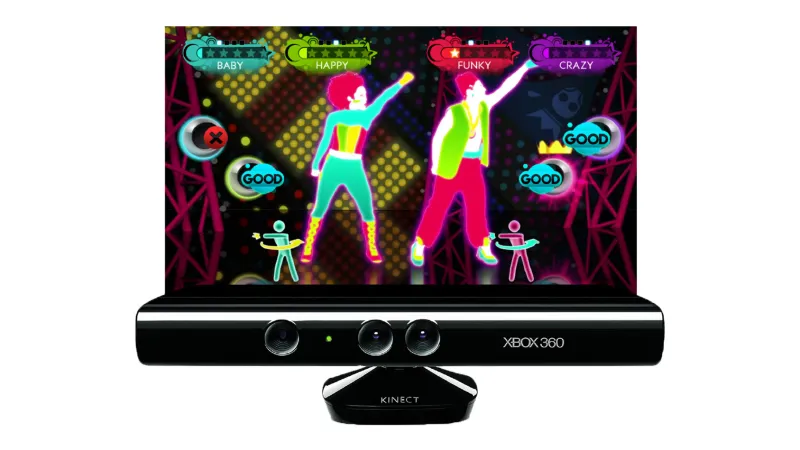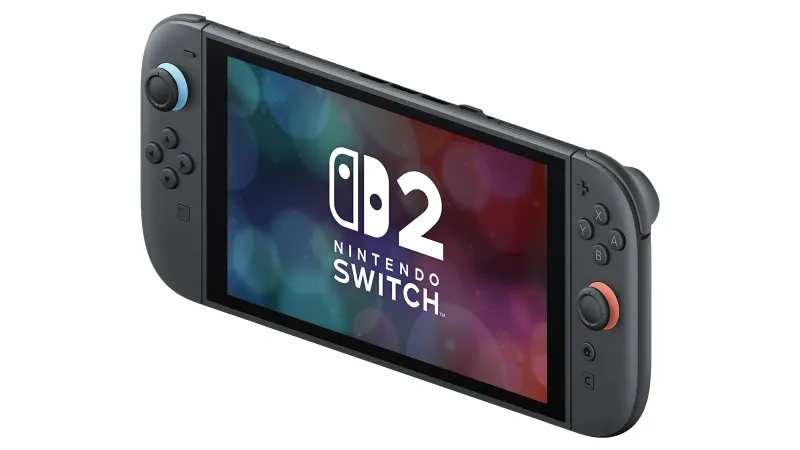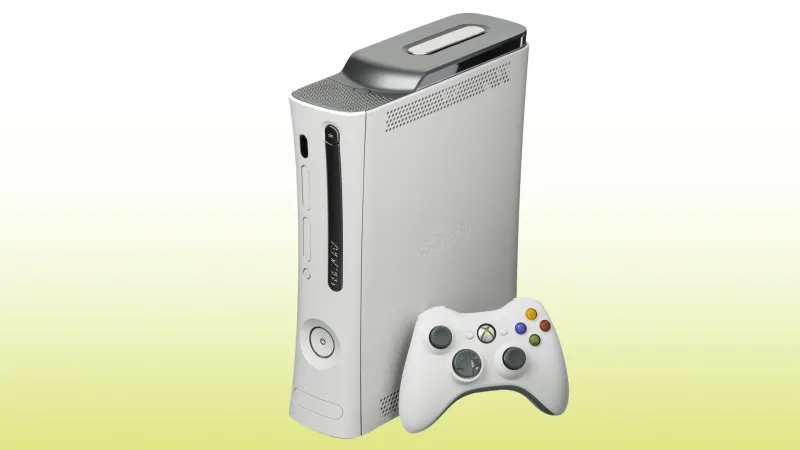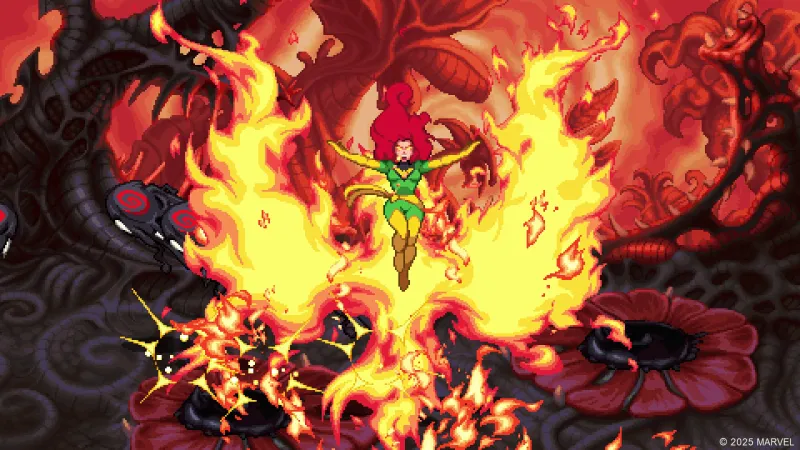This article originally appeared in Issue 360 of Game Informer. We’re publishing it online today in honor of the console’s 20th anniversary.
If you pay attention to the spine of your Game Informer magazine, you might notice we number every issue, and after 32 years, we’ve finally made it all the way to 360. What better way to celebrate than a retrospective on Microsoft’s most successful console?
The Xbox 360 is, arguably, one of the most influential modern game consoles of all time. It marked an era in the gaming industry when Microsoft was at its peak, and no console the company has released since has surpassed the 360’s lifetime sales of 85 million units. The console is remembered for huge leaps in hardware technology, its iconic library of games, its online integration, and its motion gaming experiment, the Kinect. The 360 tried a lot of new things, and while they didn’t always pan out, they all left lasting effects on the industry.
Xbox’s NXE dashboard (2008)
Reinventing The Wheel
Aware of its competition with Sony and Nintendo, Microsoft made the decision to release the 360 in 2005, an entire year ahead of the next-gen hardware of its competitors. It worked to fabulous success, thanks in no small part to the innovation the company was able to pull off. Memory cards were a thing of the past – the 360 came with a removable hard drive, so you could bring all your data to a friend’s console if you wanted. Wireless controllers existed in several forms before the 360, but this was the first time a wireless controller came packaged with the console.
It was even the first console to have a proper home menu – not just a screen to manage system settings and memory card data, but a shop, friends list, and customizable Gamer Cards for people who searched for your username. Over the years, the home screen would evolve several times, gain an avatar editor reminiscent of Nintendo’s Miis, and eventually become unrecognizable from its first iteration. The 360 was also the first to implement a console-based achievement system, rewarding players with Gamerscore for doing things like completing missions or gathering collectibles.
Of course, the push to release the 360 well before the competition did have one speculated downside: the notorious red ring of death. The three red lights. This hardware defect earned its name thanks to the way the 360 communicated errors. Depending on the issue, a number of green lights around the power button would turn red, and in the case of the red ring of death, three red segments indicated a general hardware failure. It caused the console to stop working entirely and required thousands of consoles to be sent in for repairs. A common household myth at the time was that wrapping the system in towels would force a hard reset, but this trick was unreliable at best and a fire hazard at worst. Later models of the 360 fixed this issue, but the whole debacle left a notable stain on the console’s legacy.

Limbo
A Legendary Library
Arguably, the best impact of the 360 era is Xbox Live Arcade (XBLA) and its effect on indie games. While the arcade was technically introduced during the era of the original Xbox, it was only available with the use of a special disc. The 360 had the marketplace built into its menus at launch, so it was immediately more accessible. It marked the first time games could truly be developed and sold on consoles at a smaller scale. Every XBLA game came with a free demo, so you could get a taste of it before committing to a purchase. They were also much cheaper than the average game, with most titles sitting at $9.99 or below and almost none that broke the $19.99 mark.
It can’t be overstated how important this shift was in bringing indie games to a mainstream audience. Some of the best games of the past generation debuted this way, and undeniably paved the way for games from smaller studios in the years that followed. Limbo, Braid, Castle Crashers, Super Meat Boy, Scott Pilgrim vs. the World, and Shadow Complex all made their way into the hands of console players thanks to the store. Now it’s considered the norm, but the 360 is one of the biggest reasons the standard was established.

Halo 3
Of course, the games library of the 360 included more than just downloadable indie games. Halo 3 and Halo Reach are considered the peak of the series by many and stand out as notable console exclusives. The platform also birthed the Gears of War franchise, Forza Horizon, and the Crackdown series. The 360 also spent many years as the only console with Minecraft. Its dominance over the market meant the console was the go-to for many people to play third-party games, and from 2005 to 2013, some of the best games of all time were released. Bioshock, The Elder Scrolls IV: Oblivion and The Elder Scrolls V: Skyrim, Fallout 3 and Fallout: New Vegas, the entire Mass Effect Trilogy (which began as an Xbox 360 exclusive), seven Assassin’s Creed games, nine Call of Duty games, and both Grand Theft Auto IV and V.
The era was defined by a general desire from gamers to be taken seriously, and for video games to be recognized by the world as “adult.” Visually, triple-A titles from the era are overwhelmingly brown and grey, generally avoiding bright colors from the ’90s and early ’00s. Multiplayer was also smoother and more accessible than ever, so even big-budget single-player games like Assassin’s Creed and Tomb Raider started incorporating online multiplayer modes on the side. And while expansions for games had existed for years, DLC began to exist in a more modern form; notoriously, 2006 was the year Oblivion’s cosmetic horse armor became available to purchase.

Kinect with Just Dance 3 (2011)
A Motion Commotion
Throughout the 360’s lifespan, Microsoft released several new models, but its most significant hardware evolution was the motion-sensing camera, the Kinect. As the device’s tagline suggests, when using a Kinect, “You are the controller,” and the camera senses the position of your arms and legs to interact with a library of relatively casual games. It was released around the world in November of 2010, five years into the console’s life cycle. After the Wii’s massive success in the casual market, motion controls spent a few significant years as the biggest trend in gaming. Though Microsoft’s attempt was never as successful as Nintendo’s, the gimmick and novelty of controller-free gaming certainly turned heads at launch, selling 8 million units in the first 60 days.
Unfortunately for Microsoft, the fad would eventually fizzle out. While the device was largely well-received, Microsoft struggled to build an engaging library past its launch titles. And because the technology was so unique and the install base was relatively low compared to the base console, there was never much incentive for developers to invest significant time into games for the platform. Even after getting past that initial barrier of developing games that don’t use a controller, the best-case scenario of a game’s launch would still only earn a fraction of the profits it would have if released for the 360 using the traditional controller. Years later, Microsoft marketed an improved Kinect as a core part of the system’s successor, the Xbox One, but after a disastrous E3 showing and a general lack of enthusiasm for motion-controlled gaming, the device was discontinued in 2017.

Call of Duty 2
Full Circle
The Kinect’s failings aside, the 360 is remembered fondly, and not just as a wonderful piece of hardware – it was a trailblazer, setting standards for console gaming that are still present to this day. At nearly eighteen years old, if the 360 was a person, it would be old enough to start its senior year of high school right around now. It’s been a while since it came into our lives, but we’ll never forget those early days.
And on another note, thanks for supporting Game Informer for a whopping 360 issues. If you like this piece, we’ve got more retrospectives just around the corner: Join us 2,240 issues from now to see our retrospective on the Atari 2600.
This article originally appeared in Issue 360 of Game Informer.










